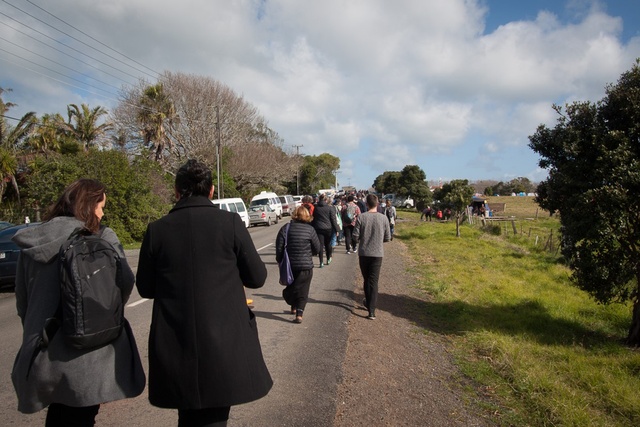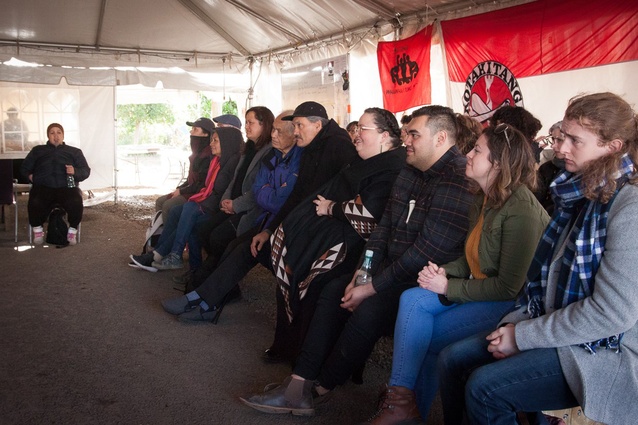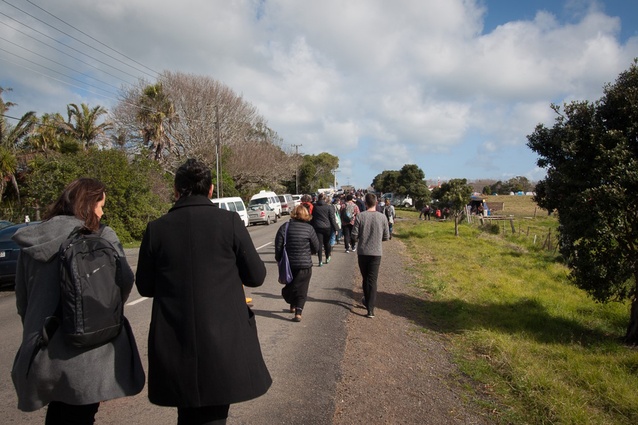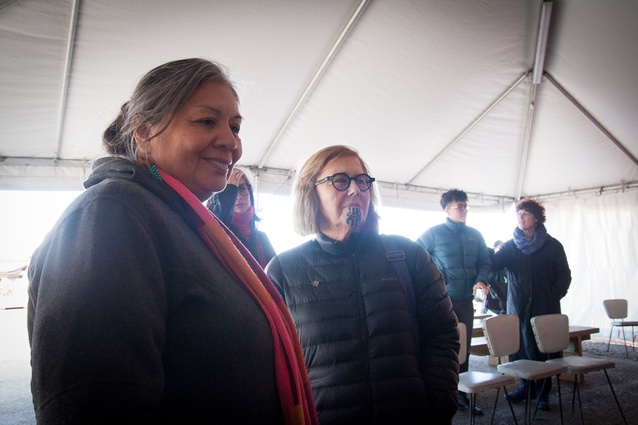Landscape professionals visit Ihumātao
Over 50 landscape professionals, academics and students joined the Landscape Foundation (LF) and Ngā Aho on their recent visit to Ihumātao in South Auckland.
Foundation trustee, Dr Diane Menzies, said the aim of the visit was to support the Save Our Unique Landscape (SOUL) group, and to hear first hand what the dispute is about.
“The Landscape Foundation’s role is to encourage understanding of landscape issues,” she told Landscape Architecture Aotearoa after the August 24 visit. “Often people are reluctant and nervous about putting themselves in situations where there’s another culture and they don’t understand.
“This was an opportunity to safely have that learning, and the landscape architects who were there will (now) be better informed.”

Ihumātao is located next to the Ōtuataua Stonefields Historic Reserve in Māngere – home to New Zealand’s earliest market gardens and a significant archaeological site on land considered wahi tapu, or sacred, by local hapū and iwi.
SOUL have been camped there for more than three years, opposing a proposed housing development by Fletchers on the land.
Dr Menzies say SOUL addressed them before taking them on a hikoi around the site, pointing out important cultural landmarks.
Landscape Foundation supports recent statements made by Maori housing group, Te Matapihi, and Maori design network, Ngā Aho, that Ihumātao is a land issue and not a housing issue. It also agrees with Ngā Aho that the Crown’s hara (wrongdoing) sits at the heart of today’s dispute, Dr Menzies says.
The land at Ihumātao was confiscated by the Crown in 1863 as part of the raupatu during the New Zealand Land Wars.
“LF recognises that Ihumātao is a unique landscape and spiritual, cultural and historical place that requires protection as a heritage landscape. The proposed development of SHA 62 by Fletchers Residential (Fletchers), while taking place on the SHA (Special Housing Area) land, will have a devastating and irreversible impact on a huge number of the taonga at Ihumātao,” says Dr Menzies.

“From a landscape perspective, we recognise that the whenua at Ihumātao holds immense significance as a place of continuous human occupation over many centuries. Because of this, the land is significant to all people of Aotearoa, not least the people who have ancestral connections to this whenua. The inherent and intrinsic values embedded in this landscape should be respected and upheld and mana whenua should always retain their right to exercise kaitiakitanga over this whenua.”
The Foundation is urging the Government to recognise the importance of this whenua to mana whenua and the values associated by returning the whenua and protecting the landscape at Ihumātao.
Further reading: In a 2013 article, environmental law expert Stephanie Curran discusses an Environment Court decision concerning the Ihumatao Peninsula; read it here.
This article was first published on the Landscape Architecture Aotearoa website, which is published by the New Zealand Institute of Landscape Architects (NZILA).













